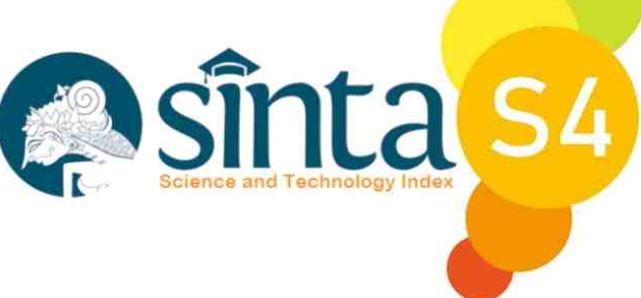Group Game-Based Physical Activity Effects on Positive and Negative Affect of Male Adolescent Prisoners
 ),
), (1) Universitas Negeri Padang
 Corresponding Author
Corresponding Author
Copyright (c) 2021 Free Dirga Dwatra
DOI : https://doi.org/10.24036/rapun.v12i1.112204
Full Text:
 Language : en
Language : en
Abstract
Keywords
References
Barlow, D. H., Durand, M., Hofmann, S. G. (2017). Abnormal psychology: An integrative approach. Boston: Cengage Learning
Berry, D.S., & Hansen, J.S. (1996). Possitive affect, negative affect, and social interaction. Journal of Personality and Social Psychology, 71(4), 796-809. https://doi.org/10.1037/0022-3514.71.4.796
Biehl, M. C., Natsuaki, M. N., & Ge, X. (2007). The influence of pubertal timing on alcohol use and heavy drinking trajectories. Journal of Youth and Adolescence, 36(2), 153-167. DOI:10.1007/s10964-006-9120-z
Clark, L. A., Watson, D., & Mineka, S. (1994). Temperament, personality, and the mood and anxiety disorders. Journal of Abnormal Psychology, 103(1), 103–116. https://doi.org/10.1037/0021-843X.103.1.103
Costa, P. T. J., & McCrae, R. R. (2008). The NEO inventories. In R. P. Archer, & S. R. Smith (Eds.), (pp. 213-245). New York, NY US: Routledge/Taylor & Francis Group. Retrieved from http://search.ebscohost.com/login.aspx?direct=true&db=psyh&AN=2008-08058-006&site=ehost-live
Cota-Robles, S., Neiss, M., & Rowe, D. C. (2002). The role of puberty in violent and nonviolent delinquency among Anglo American, Mexican American, and African American boys. Journal of Adolescent Research, 17(4), 364-376. doi:10.1177/07458402017004003
Durnescu, I. (2018) The five stages of prisoner reentry: Toward a process theory. International Journal of Offender Therapy and Comparative Criminology, 62 (8). 2195-2215. DOI: 10.1177/0306624X17706889
Evans, C. Ehlers, A., Mezey, G., & Clark, D. M. (2007). Intrusive memories and ruminations related to violent crime among young offenders: phenomenological characteristics. Journal of Traumatic Stress, 20(2), 183-196. DOI: 10.1002/jts.20204
Faden, V. B., Ruffin, B., Newes-Adeyi, G., & Chen, C. (2010). The relationship among pubertal stage, age, and drinking in adolescent boys and girls. Journal of Child & Adolescent Substance Abuse, 19(1), 1-15. DOI: 10.1080/10678280903185591
Feldman, R. S. (2015). Understanding psychology. Mc Graw Hill: NY
Garland, B., Wodahl, E.J. & Mayfield, J. (2011) Prisoner reentry in a small metropolitan community: Obstacles and policy recommendations. Criminal Justice Policy Review, 22(1). 90-110. DOI: 10.1177/0887403409359804
Goleman, D. (2016). Emotional Intelligence. Jakarta: Gramedia
Hilman, D. P., Indrawati, E. S. (2017). Pengalaman menjadi narapidana remaja di lapas klas 1 Semarang. Jurnal Empati. 7(3), 189-203. Retrieved from http://ejournal-s1.undip.ac.id/index.php/empati
Kalat, J. W. (2012). Introduction to psychology. Wadsworth Cengage Learning: USA
Khrone, H.W. (2003). Individual differences in emotional reaction and coping. New York: Oxford University Press.
King, L. A. ( 2011). The science of psychology: An appreciative view. Mc Graw Hill: New York
Li, G. S.-F., Lu, F. J. H., & Wang, A. H.-H. (2009). Exploring the relationships of physical activity, emotional intelligence and health in Taiwan college students. Journal of Exercise Science & Fitness, 7(1), 55–63
Linley, P.A., & Joseph, S. (2004). Positive psychology in practice. New Jersey: John Wiley & Sons. Inc
Peterson, C., & Seligman, M. E. P. (2004). Character strengths and virtues: A handbook and classification. Oxford University Press
Potter, M.N., Howell, D.R., Dahab, K.S., Sweeney, E.A., Albright, J.C., & Provance, A.J. (2020). Sleep quality and quality of life among healthy high school athletes. Clinical Pediatrics, 59(2), 1-8. DOI: 10.1177/2F0009922819892050
Pratiwi, A., & Faridah, I. ( 2019). Qualitative study: Adaptation experiences in adolescent changes role in prison. Nur Primary Care. 3(1), 1-5. ISSN: 2639-9474
Riyanto, P. Mudian, D. (2019). Pengaruh Aktivitas Fisik terhadap Peningkatan Kecerdasan Emosi Siswa. Journal Sport Area DOI: https://doi.org/10.25299/sportarea.2019.vol4(1).3801
Santrock, J. W. (2011). Life span development. New York: Mc Graw Hill
Seligman, M. E. P. (2002). Authentic happiness: Using the new positive psychology to realize your potential for lasting fulfillment. Free Press
Steinberg, L. (2017). Adolecence. New York: Mc Graw Hill
Stevens, R. E., Loudon, D. L., Yow, D. A., Bowden, W. W., & Humphrey, J. H.(2013).Stress in college athletics: Causes, consequences, coping. Routledge.
Swenson, L.M., Snordstrom, A., & Hiester, M. (2008). The role of peer relationship in adjustment to college. Journal of College Student Development, 49(6), 551-567. retrieved from https://www.researchgate.net/profile/Alicia_Nordstrom/publication/236827033_The_Role_of_Peer_Relationships_in_Adjustment_to_College/links/554cd9db0cf29752ee8172aa.pdf
Steiner, B. & Meade, B. (2016). Assessing the link between exposure to violent prison context and inmate maladjustment. Journal of Contemporary Criminal Justice, 32(4), 328-356. DOI: 10.1177/1043986216660009
Supriyono, A. (2018). Serunya permainan tradisional anak zaman dulu. Kementrian Pendidikan dan Kebudayaan Badan Pengembangan dan Pembinaan Bahasa
Roger, M.E., Creed, P.A. & Praskova, A. (2016). Parent and adolescent perceptions of adolescent career developmental task and vocational identity. Journal of Career Development, 23(1): 91-106. DOI: 10.1177/0894845316667483
Plutchik, R. (1980). A psychoevolutionary theory of emotions. Social Science Information. 21(4): 529-553.https://doi.org/10.1177/053901882021004003
Utami, R., & Asih, M. (2016). Konsep diri dan rasa bersalah pada anak didik lembaga pemasyarakatan anak kelas IIA Kutoarjo. Jurnal Indigenous, 1(1), 84-91. ISSN: 0854-2880
UU RI NOMOR 12 Tahun 1995 Tentang Pemasyarakatan.
Watson, D., & Clark, L. A. (1984). Negative affectivity: The disposition to experience aversive emotional states. Psychological Bulletin, 96(3), 465–490. https://doi.org/10.1037/0033-2909.96.3.465
Watson, D., Clark, L. A., & Carey, G. (1988). Positive and negative affectivity and their relation to anxiety and depressive disorders. Journal of Abnormal Psychology. 97(3), 346-333. DOI: 0021-843X/88/$00.75
Westling, E., Andrews, J. A., Hampson, S. E., & Peterson, M. (2008). Pubertal timing and substance use: The effects of gender, parental monitoring and deviant peers. Journal of Adolescent Health, 42(6), 555-563. DOI:10.1016/j.jadohealth.2007.11.002
Yasin, M.A.S.M., & Dzulkifli, M.A. (2010). The relation between social support and psychological problems among students. International Journal of Business and Social Science, 1(3), 110-116.
Zanon, C., Bastianello, M. R., Pacico, J. C., & Hutz, C. S. (2013). Relationships between positive and negative affect and the five factors of personality in a Brazilian sample. Paidéia, 23(56), 285-292. DOI:10.1590/1982-43272356201302
Zuraya, N. (July, 2017). ICJR: Jumlah tahanan anak di indonesia meningkat pesat. https://www.republika.co.id/berita/nasional/hukum/17/07/21/otfugz-icjr-jumlah-tahanan-anak-di-indonesia-meningkat-pesat
 Article Metrics
Article Metrics
 Abstract Views : 495 times
Abstract Views : 495 times
 PDF Downloaded : 117 times
PDF Downloaded : 117 times
Refbacks
- There are currently no refbacks.
Copyright (c) 2021 Free Dirga Dwatra

This work is licensed under a Creative Commons Attribution-NonCommercial 4.0 International License.






